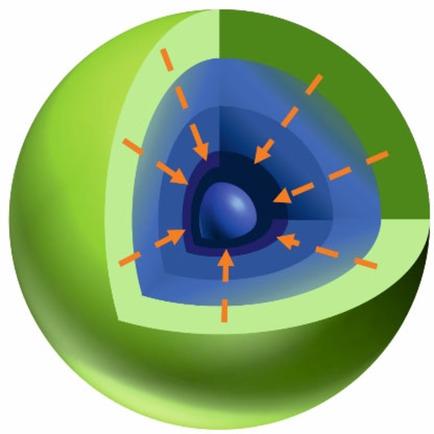当前位置:
X-MOL 学术
›
Chemistryopen
›
论文详情
Our official English website, www.x-mol.net, welcomes your
feedback! (Note: you will need to create a separate account there.)
Mechanism of Bi−Ni Phase Formation in a Microwave‐Assisted Polyol Process
ChemistryOpen ( IF 2.5 ) Pub Date : 2020-10-01 , DOI: 10.1002/open.202000236 Matthias Smuda 1 , Christine Damm 2 , Michael Ruck 1, 3 , Thomas Doert 1
ChemistryOpen ( IF 2.5 ) Pub Date : 2020-10-01 , DOI: 10.1002/open.202000236 Matthias Smuda 1 , Christine Damm 2 , Michael Ruck 1, 3 , Thomas Doert 1
Affiliation

|
Typically, intermetallic phases are obtained in solid‐state reactions or crystallization from melts, which are highly energy and time consuming. The polyol process takes advantage of low temperatures and short reaction times using easily obtainable starting materials. The formation mechanism of these intermetallic particles has received little attention so far, even though a deeper understanding should allow for better synthesis planning. In this study, we therefore investigated the formation of BiNi particles in ethylene glycol in a microwave‐assisted polyol process mechanistically. The coordination behavior in solution was analyzed using HPLC‐MS and UV‐Vis. Tracking the reaction with PXRD measurements, FT‐IR spectroscopy and HR‐TEM revealed a successive reduction of Bi3+ and Ni2+, leading to novel spherical core‐shell structure in a first reaction step. Bismuth particles are encased in a matrix of nickel nanoparticles of 2 nm to 6 nm in diameter and oxidation products of ethylene glycol. Step‐wise diffusion of nickel into the bismuth particle intermediately results in the bismuth‐rich compound Bi3Ni, which consecutively transforms into the BiNi phase as the reaction progresses. The impacts of the anion type, temperature and pH value were also investigated.
中文翻译:

微波辅助多元醇工艺中 Bi−Ni 相的形成机制
通常,金属间相是通过固态反应或熔体结晶获得的,这些过程非常耗费能源和时间。多元醇工艺利用易于获得的起始原料,具有低温和短反应时间的优点。迄今为止,这些金属间颗粒的形成机制很少受到关注,尽管更深入的了解应该有助于更好的合成规划。因此,在这项研究中,我们从机理上研究了微波辅助多元醇过程中乙二醇中 BiNi 颗粒的形成。使用 HPLC-MS 和 UV-Vis 分析溶液中的配位行为。通过 PXRD 测量、FT-IR 光谱和 HR-TEM 跟踪反应,揭示了 Bi 3+和 Ni 2+的连续还原,从而在第一步反应中形成了新型的球形核壳结构。铋颗粒被包裹在直径为 2 nm 至 6 nm 的镍纳米颗粒和乙二醇氧化产物的基质中。镍逐步扩散到铋颗粒中,中间产生富铋化合物 Bi 3 Ni,随着反应的进行,它连续转变为 BiNi 相。还研究了阴离子类型、温度和 pH 值的影响。
更新日期:2020-11-03
中文翻译:

微波辅助多元醇工艺中 Bi−Ni 相的形成机制
通常,金属间相是通过固态反应或熔体结晶获得的,这些过程非常耗费能源和时间。多元醇工艺利用易于获得的起始原料,具有低温和短反应时间的优点。迄今为止,这些金属间颗粒的形成机制很少受到关注,尽管更深入的了解应该有助于更好的合成规划。因此,在这项研究中,我们从机理上研究了微波辅助多元醇过程中乙二醇中 BiNi 颗粒的形成。使用 HPLC-MS 和 UV-Vis 分析溶液中的配位行为。通过 PXRD 测量、FT-IR 光谱和 HR-TEM 跟踪反应,揭示了 Bi 3+和 Ni 2+的连续还原,从而在第一步反应中形成了新型的球形核壳结构。铋颗粒被包裹在直径为 2 nm 至 6 nm 的镍纳米颗粒和乙二醇氧化产物的基质中。镍逐步扩散到铋颗粒中,中间产生富铋化合物 Bi 3 Ni,随着反应的进行,它连续转变为 BiNi 相。还研究了阴离子类型、温度和 pH 值的影响。











































 京公网安备 11010802027423号
京公网安备 11010802027423号